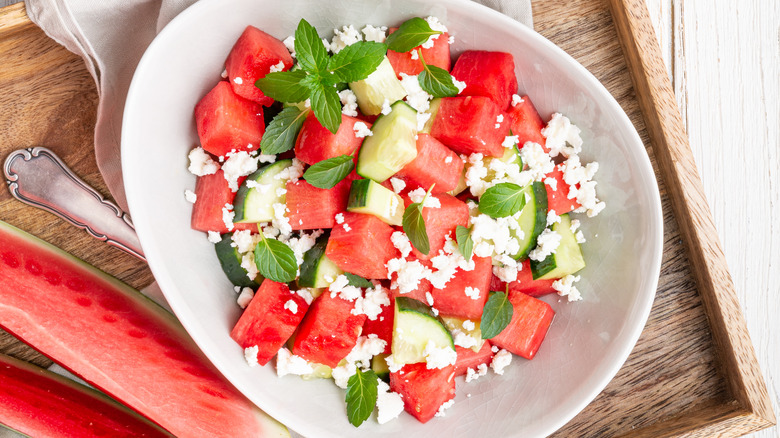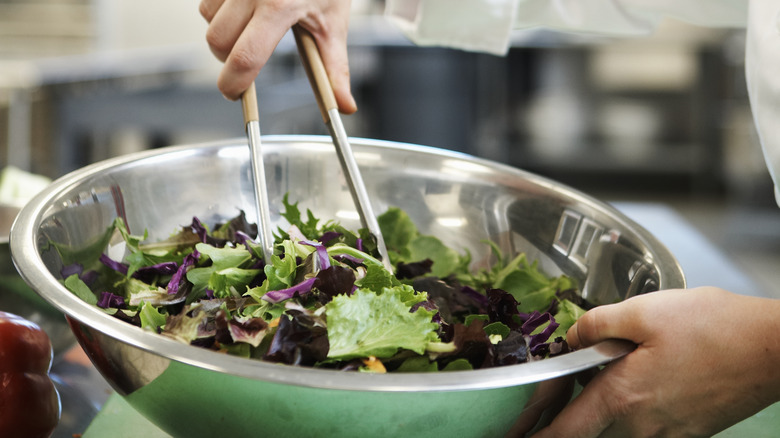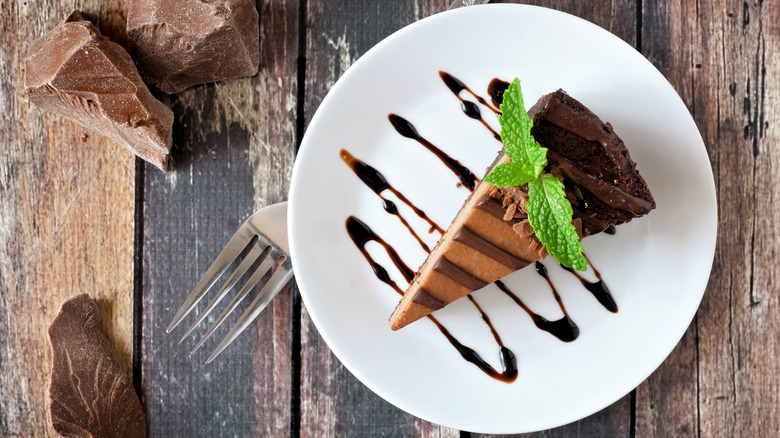Serve Up A Better, Fresher Salad By Chilling The Bowls
Whether you're making a recipe for seasonal chopped salad, a funky wedge salad, or even a sweet fruit salad, serving it the right way is just as important as tossing or dressing it correctly. You want those fruits and veggies to be as crisp and fresh as possible, and while starting with quality ingredients is the first step, pre-chilling your bowls or plates is the perfect finishing touch.
When dining at your favorite restaurant, you might notice that the plate holding your salad feels as cool as the veggies themselves. This effect is absolutely worth recreating at home. By serving salad in cold bowls, you preserve both the temperature and freshness of the ingredients. The warmer your serving bowls are, the quicker your greens or fresh herbs wilt. A chilled plate or bowl ensures that when you finally sit down to eat, you won't find that your lettuce is limp, or those refreshing, juicy chunks of watermelon or cucumber are now lukewarm.
Obviously, bowls straight from a hot dishwasher should be avoided, but even the room-temperature ones sitting in your cupboard are too warm — especially if your kitchen is still toasty after searing a nice steak au poivre to go with your salad. Sticking your dishes in the fridge for a while is a must-do, making sure your final bite of salad is as refreshing as the first. Try it once and you'll never look back.
Chill your bowls while preparing your salad
A mere 15 minutes in the refrigerator is plenty of time to chill your bowls. Simply put them in the fridge before getting started on your salad, and they should be nice and cold when it's time to eat. If you like to prep your ingredients in advance and toss them together right before serving, remember to pop your bowls in the fridge at least 15 minutes before dinner. Just don't be tempted to dress any delicate greens in advance, as this can also cause them to go soggy . Not even a cold serving bowl can rescue them after that.
If you have fridge space to spare, your salad will be even better if you also toss it in a cold bowl, keeping it chilly from start to finish. Just stick your go-to big salad bowl in the fridge at the same time as your serving bowls. If your fridge is crammed, you can also run your salad bowl under some cold water and dry it with paper towels. This should give it just a bit of chill that will still make a difference in the end.
As another benefit, cold bowls keep greens crisper even if you add warm ingredients on top. Do you like to top off your classic Caesar salad with a warm chicken breast or grilled steak? The lettuce underneath with still benefit from the chill emanating from the bowl below.
Use dishware at the right temperature for other foods, too
Salad isn't the only dish that can benefit from a chilled plate. Most desserts should also be served this way, which is why many restaurants also keep their dessert dishes chilled. A cold bowl obviously prevents ice cream from melting, but a chilly plate can keep slices of cool, creamy cheesecake at the right temperature, or preserve the integrity of delicate frostings. Chilled ramekins or glasses will keep airy mousses nice and refreshing, as well.
There are also countless recipes that benefit greatly from warm bowls or plates, including seared meats, piping-hot soups, freshly-scrambled eggs, or warm salads, like one made of garbanzo beans, barley, or roasted vegetables. To create a pre-warmed bowl or plate, put your dishware in a warm (not hot) oven for 15 minutes. Just be sure to check that the dishes are oven-safe first, and wear oven mitts when it's time to take them out.
By serving cold food on cold dishes and hot food on warm dishes, your meals will gain an instant restaurant-like quality that will impress your guests. Take the extra time to prep your plates and bowls, and you'll never be disappointed by drab, room-temperature salads or lukewarm entrées.



